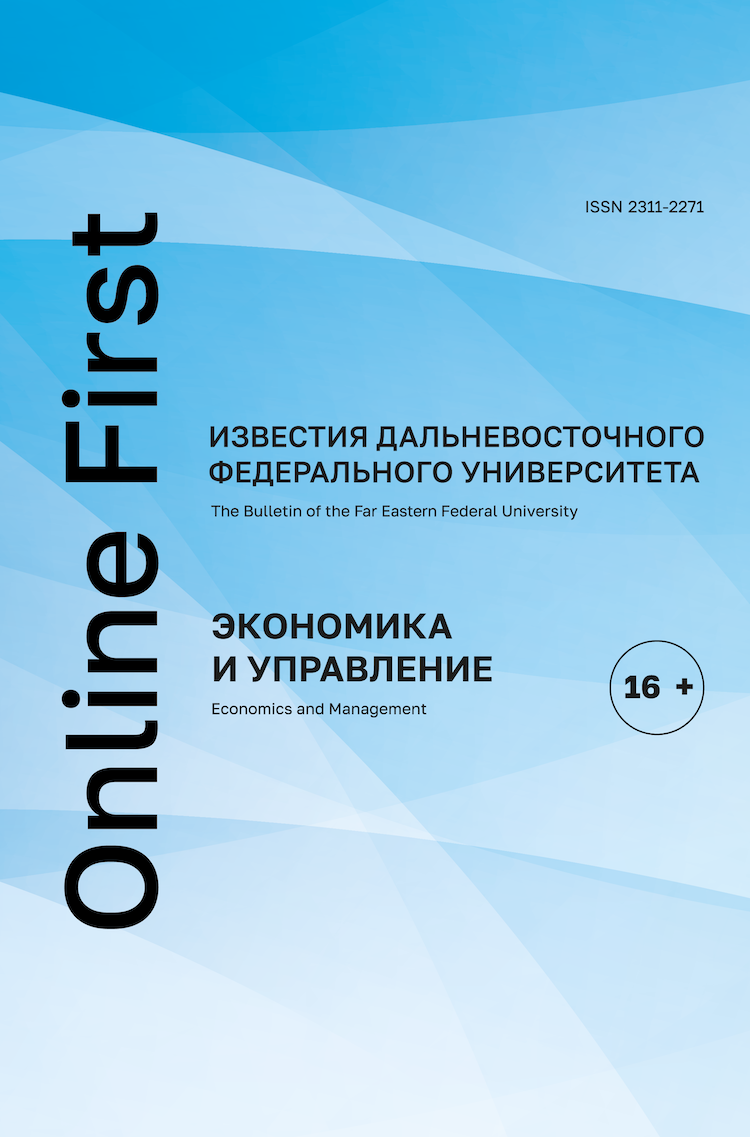Теоретико-игровое моделирование коррупционного поведения на таможне
Аннотация
Ключевые слова
Полный текст:
PDFЛитература
Abbink K., Irlenbusch B., Renner E. An experimental bribery game // Journal of Law, Economics, and Organization. 2002. Vol. 18 (2). P. 428–454.
Abbink K. Staff rotation as an anti-corruption policy: an experimental study // European Journal of Political Economy. 2004. Vol. 20 (4). P. 887–906.
Abbink K., Hennig-Schmidt H. Neutral versus loaded instructions in a bribery experiment // Experimental Economics. 2006. Vol. 9 (2). P. 103–121.
Abbink K., Wu K. Reward self-reporting to deter corruption: An experiment on mitigating collusive bribery // Journal of Economic Behavior & Organization. 2017. Vol. 133 (1). P. 256–272.
Aidt T. Economic analysis of corruption: a survey // The Economic Journal. 2003. Vol. 113 (491). P. F632–F652.
Aidt T., Hillman A., Qijun L. Who takes bribes and how much? Evidence from the China corruption conviction databank // World Development. 2020. Vol. 133. P. 1–12.
Alm J., Torgler B. Do ethics matter? Tax compliance and morality // Journal of Business Ethics. 2011. Vol. 101 (4). P. 635–651.
Basu K., Basu K., Cordella T. Asymmetric punishment as an instrument of corruption control // Journal of Public Economic Theory. 2016. Vol. 18 (6). P. 831–856.
Becker G. Crime and punishment: An economic approach // The economic dimensions of crime. — London: Palgrave Macmillan, 1968. — P. 13–68.
Brenner S. An empirical study of the European corporate leniency program // International Journal of Industrial Organization. 2009. Vol. 27 (6). P. 639–645.
Dufwenberg M., Spagnolo G. Legalizing bribe giving // Economic Inquiry. 2015. Vol. 53 (2). P. 836–853.
Gaygısız E., Lajunen T. Cultural values, national personality characteristics, and intelligence as correlates of corruption: A nation level analysis // Heliyon. 2022. Vol. 8 (5). P. 203–234.
Harri A., Zhllima E., Imami D., Coatney K. Effects of subject pool culture and institutional environment on corruption: Experimental evidence from Albania // Economic Systems. 2020. Vol. 44 (2). P. 890–936.
De Jong E., Bogmans C. Does corruption discourage international trade? // European Journal of Political Economy. 2011. Vol. 27 (2). P. 385–398.
Khalil S., Sidani Y. Personality traits, religiosity, income, and tax evasion attitudes: An exploratory study in Lebanon // Journal of International Accounting, Auditing and Taxation. 2022. Vol. 47. P. 156–194.
Lianju S., Luyan P. Game theory analysis of the bribery behavior // International Journal of Business and Social Science. 2011. Vol. 2 (8). P. 104–107.
Mavisakalyan A., Otrachshenko V., Popova O. Can bribery buy health? Evidence from post-communist countries // Journal of Comparative Economics. 2021. Vol. 49 (4). P. 991–1007.
Olken B. Monitoring corruption: evidence from a field experiment in Indonesia // Journal of Political Economy. 2007. Vol. 115 (2). P. 200–249.
Quah J. Combating corruption in Singapore: what can be learned? // Journal of Contingencies and Crisis Management. 2001. Vol. 9 (1). P. 29–35.
Rose-Ackerman S. The economics of corruption // Journal of Public Economics. 1975. Vol. 4 (2). P. 187–203.
Salmon T., Serra D. Corruption, social judgment and culture: An experiment // Journal of Economic Behavior & Organization. 2017. Vol. 142 (10). P. 64–78.
Stephenson M. Corruption as a self-reinforcing trap: Implications for reform strategy // The World Bank Research Observer. 2020. Vol. 35 (2). P. 192–226.
Transparency International. What is corruption? 2022. — URL: https://www.transparency.org/en/what-is-corruption.
Ufere N., Perelli S., Boland R., Carlsson B. Merchants of corruption: How entrepreneurs manufacture and supply bribes // World Development. 2012. Vol. 40 (12). P. 2440–2453.
Rijckeghem C. Van, Weder B. Corruption and the Rate of Temptation: Do Low Wages in the Civil Service Cause Corruption? — Washington D.C.: IMF Working Paper, 1997.
Van Rijckeghem C., Weder B. Bureaucratic corruption and the rate of temptation: do wages in the civil service affect corruption, and by how much? // Journal of development economics. 2001. Vol. 65 (2). P. 307–331.
Васин А., Николаев П., Уразов А. Механизмы подавления коррупции // Журнал новой экономической ассоциации. 2011. № 2 (10). С. 10-30.
Петров И., Васин А., Вартанов С. О возможности совершенствования системы производственного контроля на угледобывающих предприятиях с использованием инструментария теории игр // Горный журнал. 2020. № 4. С. 76–80.
Савватеев А. Оптимальные стратегии подавления коррупции // Экономика и математические методы. 2003. Т. 39. № 1. С. 62–75.
Сергеева А., Кириллов В., Джумагулова А. Перевод и адаптация краткого пятифакторного опросника личности (TIPI-RU): оценка конвергентной валидности, внутренней согласованности и тест-ретестовой надёжности // Экспериментальная психология. 2016. Т. 9 (3). С. 138–154.
(c) 2022 Научный журнал "Известия Дальневосточного федерального университета. Экономика и управление"
© Дальневосточный федеральный университет, 1996-2022.
© Научный журнал "Известия Дальневосточного федерального университета Экономика и управление" - 16+.
Свидетельство о регистрации средства массовой информации ПИ № ФС77-57575
Издатель - ФГАОУ ВО "Дальневосточный федеральный университет".
При перепечатке ссылка на Сайт Журнала обязательна.
Коммерческое использование размещенных материалов запрещено.
E-mail: sem-journal@dvfu.ru





